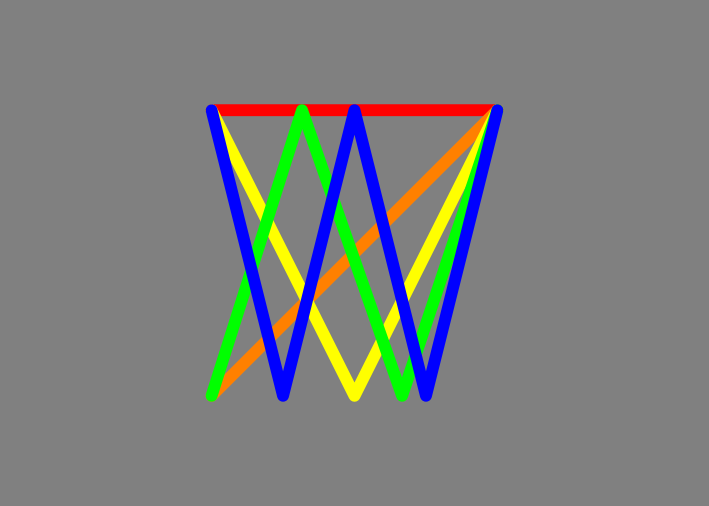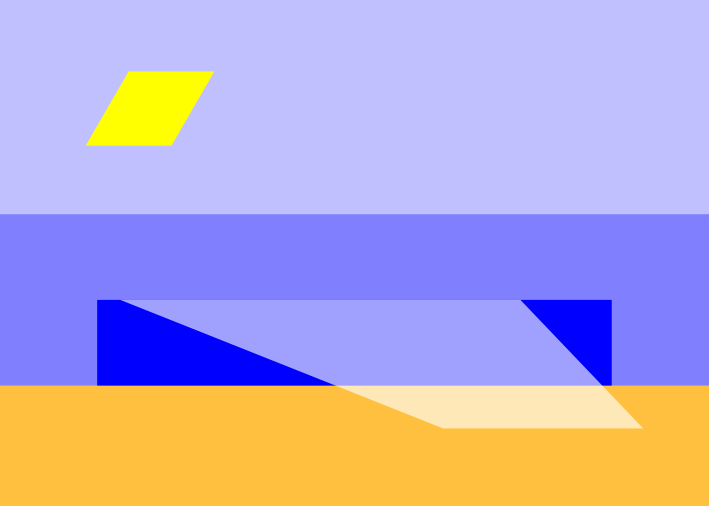
William Overington
-
Posts
3,062 -
Joined
-
Last visited
Posts posted by William Overington
-
-
2 hours ago, Alfred said:
In Pen mode, click (without dragging) at the start point, and then click (again without dragging) at the end point. Alternatively, use Line mode or Polygon mode.
And then one can adjust the coordinates of each of the end points numerically using the Node Tool in conjunction with the Transform panel, using whichever of the available choice of measurement units one chooses.
-
36 minutes ago, Alfred said:
Perhaps best we continue this in the following thread in your forum
-
On 6/25/2025 at 8:10 AM, Alfred said:
As a side note, I’ve always wondered why “questionnaires” has a double n but “millionaires” and “billionaires” only get one each, despite the fact that such people are wealthy enough to buy almost anything else that they want.
A possible explanation is that it is a similar situation to the following.
I read, sometime, somewhere, that words such as, for example, travelled, end in -led in American English yet in -lled in British English, with the exception in British English that the word paralleled has only a single letter l near the end, not a double letter l, because it already has a double letter l earlier within it.
-
-
44 minutes ago, bobdobbs said:
Sorry, I know this is probably a dumb question, but I can't figure out how to draw straight lines with the pen tool.
No need to apologise.
If you need to know, it is not a dumb question.
I like the Pen Tool. When I use it I tend to guess where to put the points then I use the Node Tool and the Transform Panel to position the points with numerical accuracy.
The Pen Tool can be used to produce a connected sequence of lines. After drawing the first line, simply click somewhere else on the canvas. An so on, as many times as one chooes to do that.
Indeed, it is necessary to click off the canvas, possibly onto another tool, to ensure that it does not add another straight line if one does not want that to happen.
If one wants a closed curve, which one can then fill with colour if one so chooses, there is a button on the Toolbar that allows one to close the curve.
-
57 minutes ago, Alfred said:
It comprises nothing but straight lines, which isn’t (in my view) a good fit for your intended hint.
Well, um ... possibly! 😃
I had in my mind the meaning that I wanted to convey and I wondered how to do it in an abstract yet hinting manner.
-
34 minutes ago, Alfred said:
It looks like a parallelogram or a skewed rectangle. Making such a shape doesn’t strike me as particularly interesting, which suggests that you may have got there via a somewhat circuitous route,
It is a rhombus, as all four sides are of equal length.
I started with a rectangle produced using the rectangle tool. In the original artwork, which is 420 mm by 300 mm and 6 mm wide bleed areas, I made the width of the rectangle 300 pixels and the height of the rectangle 260 pixels (260 being an integer approximation to 300 times (root 3 over 2), then I applied a 30 degree shear. The shear keeps the overall vertical height yet lengthens the vertical lines of the original rectangle while not altering the lengths of the horizontal lines
The 420 mm by 300 mm and 6 mm wide bleed areas is so that the artwork could be used at three different print sizes, A3 (420 mm by 297 mm), cloche (400 mm by 300 mm), A5 (210 mm by 148 mm). The 6 mm bleed areas in the artwork are so that upon producing an A5 size version for printing that the A5 version has 3 mm wide bleed areas filled with colour.
-
8 hours ago, William Overington said:Spoiler
The idea is to prompt consideration of whether, in a way similar to the way a weighted sum of Chebyshev polynomials can be used to model some other function, could a weighted sum of these functins be used to model some other function in a piece-wise linear manner? Yet are these functions an orthogonal set? If not, what are the implications?
-
6 hours ago, Alfred said:
How so, William? There’s only one small part (represented by pale yellow) that is over the sand rather than between the sand and the sea.
SpoilerThe intention is to hint at a breaking wave. The dark blue part is the incoming wave and the trapezium is semi-opaque white, as the water from the broken wave momentarily streams up the beach.
-
7 hours ago, Alfred said:
I see sun, ...
Making that shape was interesting. Any idea of how I did it?
-
He was born within a few days of the Saint Day of the Saint related to the local church and his first name is after the Saint.
-
Here is a second clue
SpoilerChebyshev polynomials
-
13 minutes ago, Alfred said:
I see a blue W (for William?)
No
13 minutes ago, Alfred said:I see a blue W (for William?) with a green N behind it and a yellow V behind that (NV as in envy, perhaps?) but the orange and red lines seem to conspire to turn the whole thing into a colourful basketball hoop.
No
I wondered if the meaning would seem obvious to anyone.
Here is a clue, hidden unless requested
SpoilerChebyshev
-
Well, it is in the sea, part of the sea.
-
2 minutes ago, Alfred said:
that object between the sand and the sea
No it is not! 😄
4 minutes ago, Alfred said:... but that object between the sand and the sea looks much too fragile to stand on!
Indeed!
-
-
-
Here is swatchlegend used as a word without capital letters.
https://mathematica.stackexchange.com/questions/199911/how-to-add-swatchlegend-to-a-graph
-
13 hours ago, GarryP said:
Yeah, having the same term for two different things that can be referred to by users of the software can be confusing at times.
How about using swatchchart for what is being requested.
Later note
It appears that SwatchLegend might be the word to use.
https://reference.wolfram.com/language/ref/SwatchLegend.html
-
Could there be a checkbox on the dialogue panel for this SwatchLegend feature where the checkbox is labelled as follows please.
Please generate an additional page and place the SwatchLegend on that new page.
-
1 minute ago, PaulEC said:
Unfortunately there seems to be very little discussion regarding support of Indic languages and a lot about the thread itself!
That is correct. Alas. Grumbling away what could be a wonderful opportunity. Creating a controversialized ambience rather than an enthusiastic ambience.
5 minutes ago, PaulEC said:Having said that, it's Friday again (it only seems like a week since the last one) and I'm still wondering how any user can "have a go" at implementing a new feature in Affinity software!
Because something like this is not only computer programming.
If I, with almost zero knowledge of Indian languages, were trying to implement (some) Indian language support in a software program, I would find progress much easier if some people who do know those languages were to provide some basic examples of what is needed, explaining features that need to be included.
Maybe as png files showing examples.
Then I would be able to try to use the information available in The Unicode Standard and wherever else I could find guidance to try to produce the result, by proper process, that I knew was what was needed.
I had hoped that that is how this thread would develop and eventually lead to support for Indian languages in Affinity products.
-
As a result of seeing your post I looked up S Club 7 and saw a photograph of them. They look happy. I like people being happy.
-
9 minutes ago, wonderings said:
You trying to setup times for them to meet and talk about this is ridiculous.
Not so much a meeting as such, maybe the topic of chat in their tea break.
If some members of the Affinity team show interest, maybe the management will encourage them to have a go on Friday aftenoons.
That could be a great opportunity. Opportunities can be seized, or grumbled away ... ....
I am trying to provide the opening for someone to say, as they wait for their tea to cool, "Did you see that thread about trying to get Indian languages implemented in Affinity products ... What do you think?" and the discussion might start. Who knows what views might be expressed.
I can but try.
Reach for the stars.
-
7 minutes ago, Pšenda said:
And many are just wondering why the thread has such a meaningless Tag.
The tag is not meaningless.
The tag is because what I am suggesting would be a great leap forward for Affinity products, but it needs effort and enthusiasm to be achieved.
Maybe, just maybe, this thread, these posts will get the possibility discussed rather than being not discussed.
Such a discussion within the Affinity team may lead to opportunity for anyone enthusiastic to have a go on Friday afternoons.





A picture
in Share your work
Posted
I was looking through some images that I had produced using Affinity Designer and I found this one.
It was on pagev 23 of Share your work.
I cannot remember exactly what it was about, so it is interesting for me to look at and consider almost as if new to me.
William